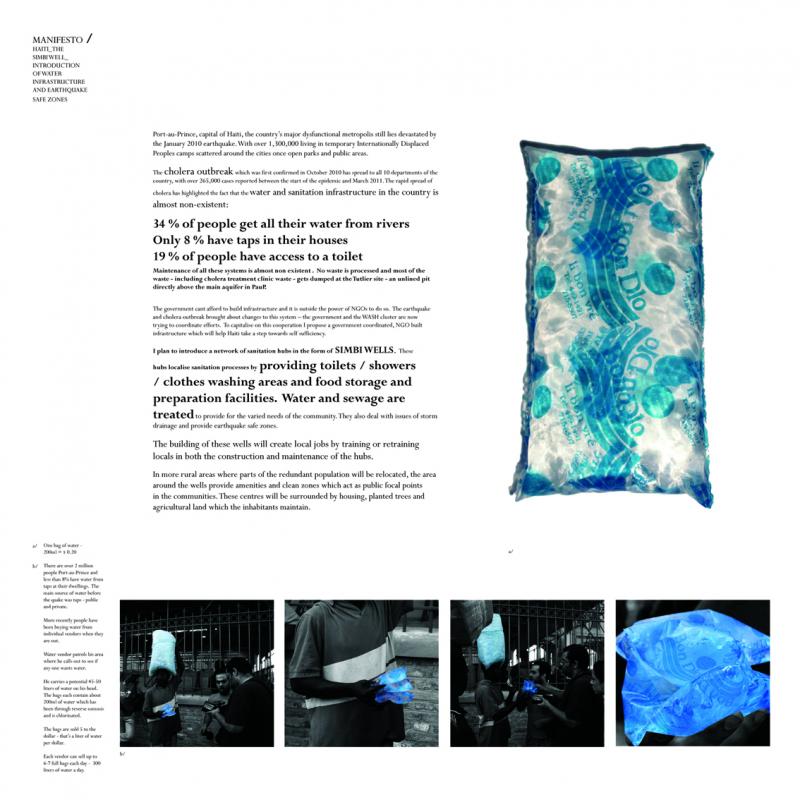
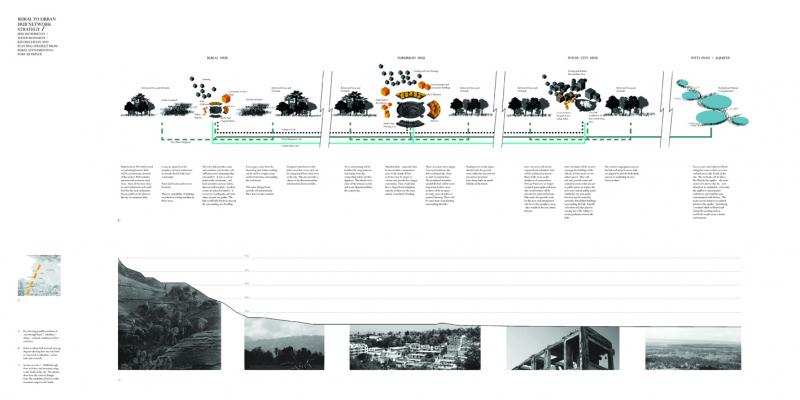
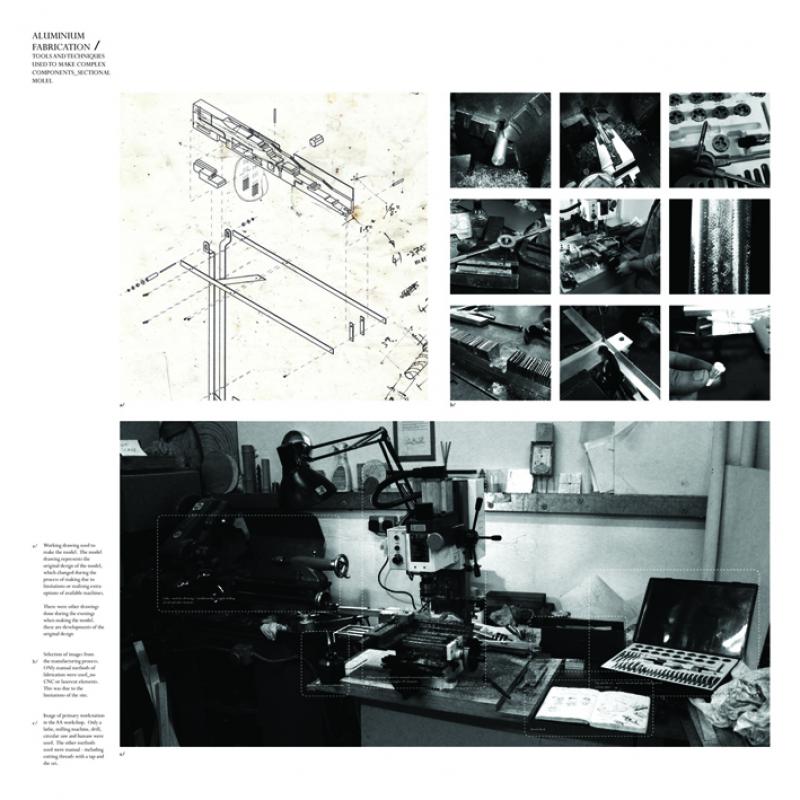
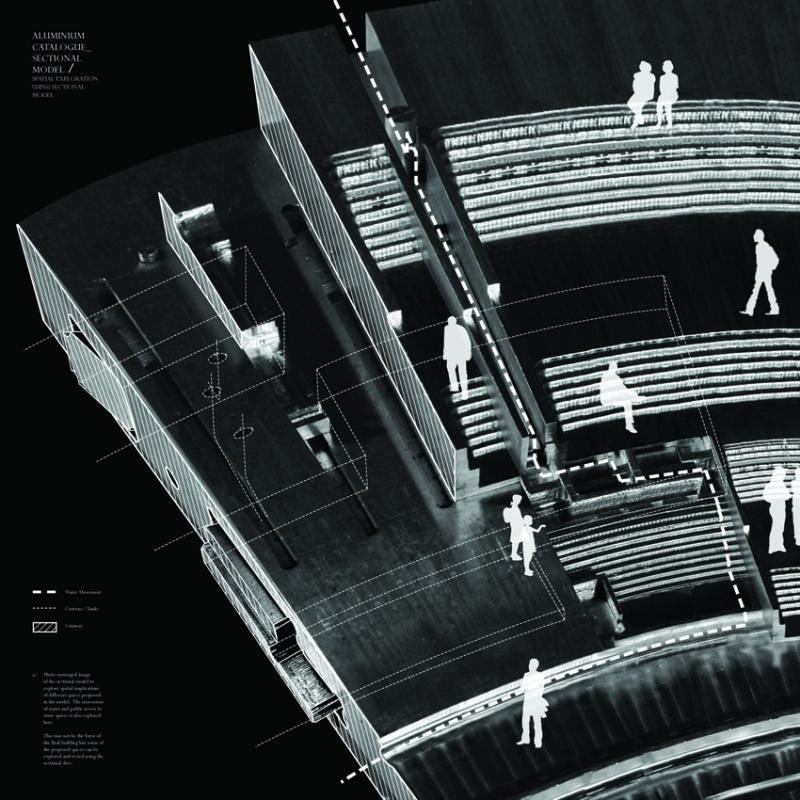

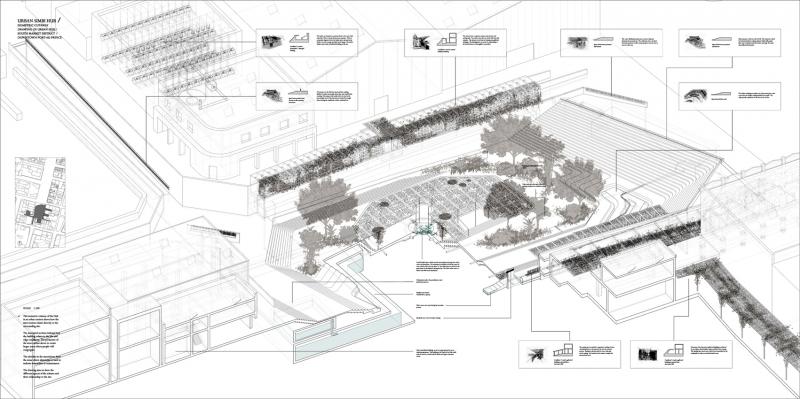
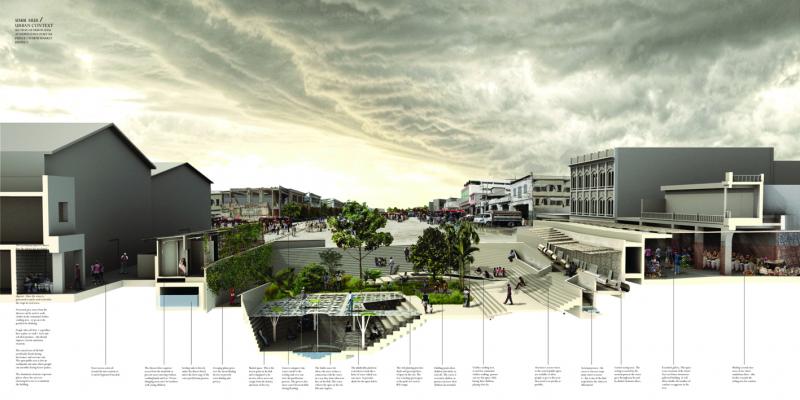
Both the Earthquake and cholera outbreak of 2010 have exposed the two broken infrastructures of Haiti.The lack of both physical and governmental infrastructure.
Rapid unregulated growth of the city during economic depression led to bad building practice and planning. Post quake the IDP camps have overtaken any existing public space.
The rapid spread of cholera has highlighted poor access to water and sanitation in the country.
34 % of people get all their water from rivers
Only 8 % have taps in their houses
Only 19% of people have access to a toilet.
No waste is processed and most of the waste (including ctc waste) gets dumped in an unlined pit directly above the main source of water for Port au Prince.
The government can’t afford to build infrastructure and it is outside of the power of NGOs to do so. The earthquake and Cholera have caused the Government and WASH NGO cluster to work together for the first time.
To take advantage of this rare cooperation I propose a government managed and NGO built infrastructure.
I plan to introduce a network of sanitation points in the form of SIMBI HUBS. These hubs localise sanitation processes by providing toilets / showers / clothes washing areas and food storage and preparation facilities. Water and sewage are treated on site. The hubs also deal with issues of storm drainage and provide earthquake safe zones.
Components of the hub are designed and built locally, using both traditional methods of metal fabrication present in villages outside the city and training people in more modern techniques within the city.
The Vision for the interventions is not only to create a new sanitation infrastructure, but also to make sense of the city through adding a layer of much needed public realm into the urban fabric.